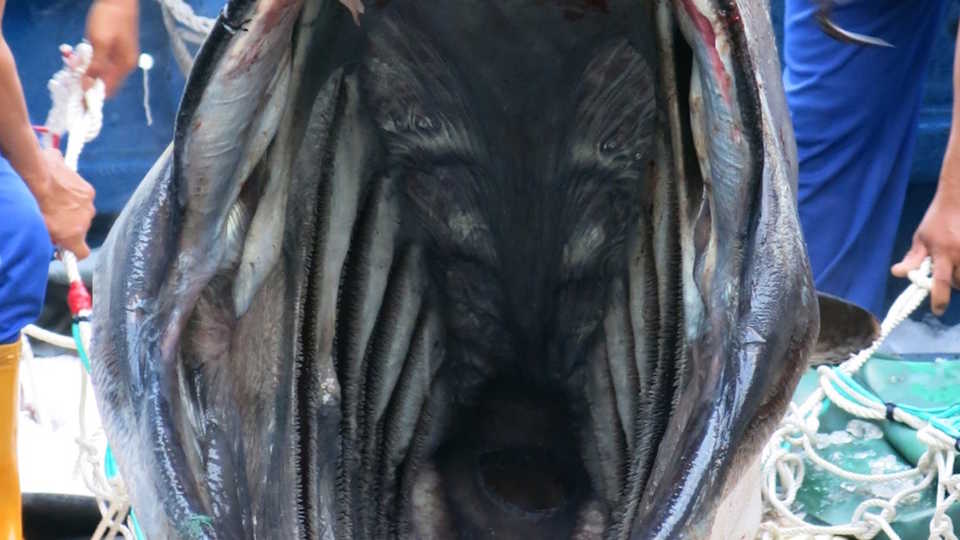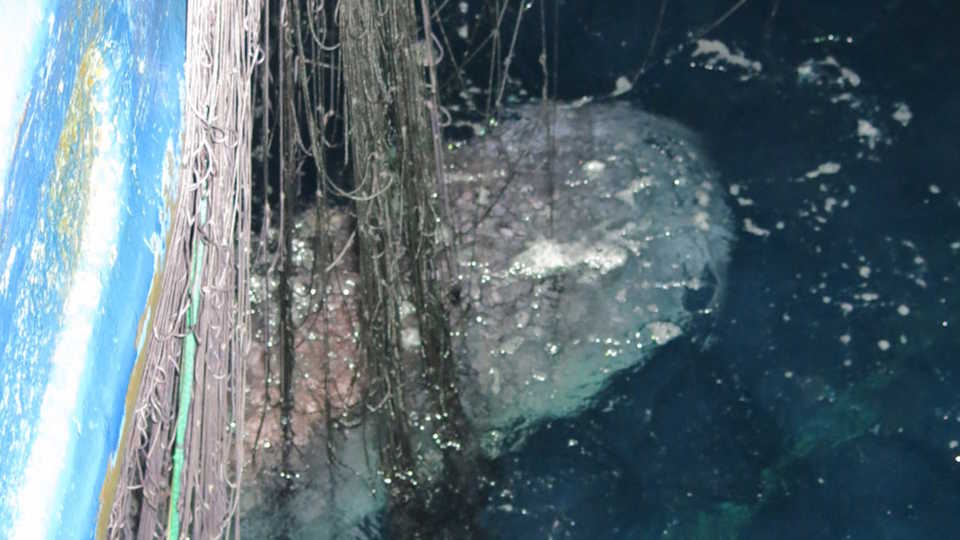Science News
Megamouth Shark Found
From time to time, we check in with Dave Ebert, Academy research associate and scientist with Moss Landing Marine Laboratories, who has made it his job and responsibility to find lost sharks. Sure, great white sharks get a lot of attention, but lost sharks are the other 1,000-plus species of sharks, skates, and rays that we know little or nothing about.
Despite its familiar sounding name, megamouth sharks (Megachasma pelagios) are one of those lost species. Discovered in 1976, and described and published in the Academy’s journal in 1983, only 60 or so individuals have been seen or caught since then, at least until 2013. That’s when fishermen catching ocean sunfish off the coast of Taiwan started pulling up megamouths in their nets.
Speaking to fishermen, Ebert discovered that the ocean sunfish fishery started 12 years ago—about 20 miles off of the coast of Taiwan—and not coincidentally the first record of a megamouth shark from Taiwan was reported at that time.
As we’ve written here (and here), scientists look to fishermen and fish markets in Taiwan to find new species and lost sharks. The Taiwanese eat a lot of fish, and the entire fish. Their economy is dependent on seafood, so the government is good at fisheries management, according to Ebert.
Speaking to several fishing captains, Ebert was confident that if he went to the location in the right season and at the right time, he could catch one of these rare sharks, too. He proposed the idea of filming his tagging one of these beasts (they can grow as long as 7.2 meters, or 24 feet, and weigh over 2000 kilograms, or 4,400 pounds) to the Discovery Channel for their annual shark week. Discovery bit at the opportunity, funding the expedition, and in May, Ebert and his colleagues went in search of megamouth. (You can view the episode here.)
The first night the scientists and film crew went out with the fishermen, they had no luck, but on the second night, they caught a megamouth and tagged it with a small satellite tag. It happened to be the 100th megamouth specimen ever recorded.
“After 30 plus years of research, this was a highlight of my career,” Ebert says. “They are amazing animals, they are very specialized predators, with this whole mouth structure, including small teeth called rakers, that are the size of little fingernails and designed to trap krill. The teeth have a shiny reflective appearance to them, so with the shark’s open mouth, krill are attracted to the shiny things like a lure.”
The satellite tag, which was designed to pop-off of the shark within the next few weeks, could provide important information about these illusive, lost sharks, Ebert says. “Now we can learn about their ecology. Once get information back from the tag, we can learn what the shark has been up to—the depth and distance it travels. There is a chance that it won’t work,” he warns. “So far it hasn’t transponded to the satellite, but we’re keeping our fingers crossed that it will work out and we’ll get data back.”
If it doesn’t work out, Ebert hopes to get another crack at tagging the megamouths in Taiwan next spring, when the sunfish appear to be most abundant. And by following the krill that the megamouths prefer, maybe he’ll get lucky a little closer to home in southern California or Baja, where these sharks have been seen in the past.
In the meantime, Ebert will continue his search for other lost sharks. “This is a good example of learning more about these lost sharks. I love doing this stuff—you never know what you’re going to find.”
Dave Ebert will be at Nightlife this Thursday chatting about lost sharks and more! For more information, click here.
Image(s): Dave Ebert

